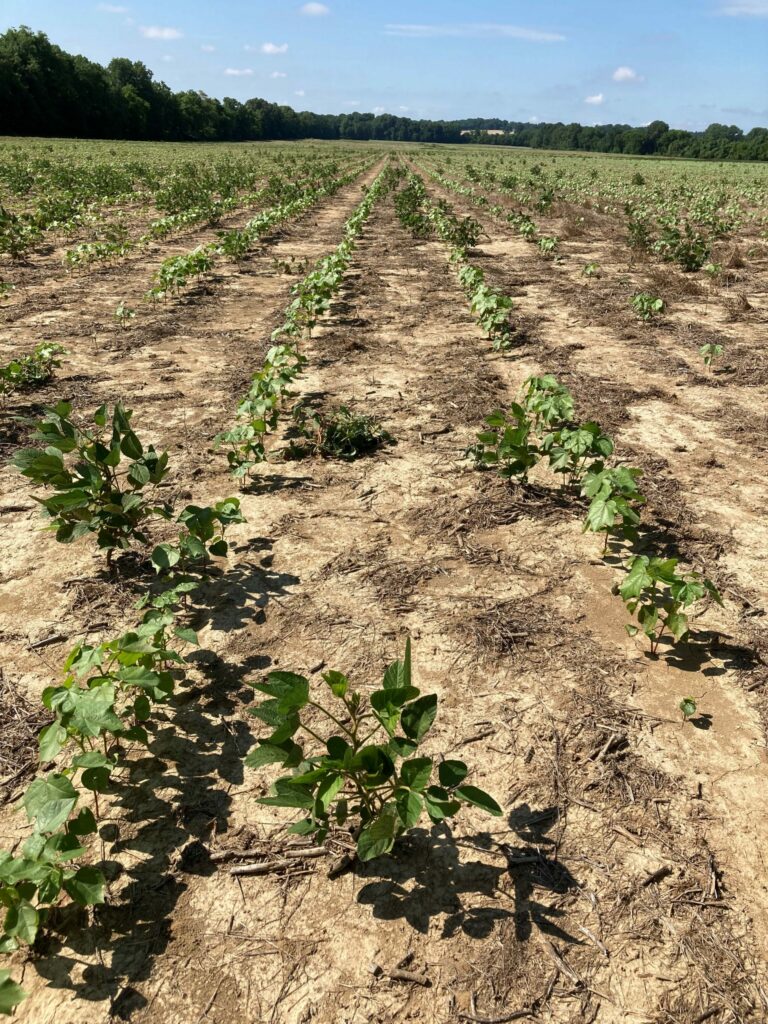
What are some options to control volunteer XtendFlex soybeans in XtendFlex cotton fields? As mentioned in an earlier blog both Envoke and Staple look to be potential answers to this new issue but without data it was difficult to say. It was brought to my attention that Dr. Alan York, emeritus Professor at North Carolina State University, actually has some data on this problem. A study was conducted in North Carolina and Georgia in 2000 and 2001 with the objective of examining if Envoke, Staple or MSMA could control Roundup Ready volunteer soybean in Roundup Ready cotton.
Their studies showed that 0.05 and 0.10 ozs of Envoke provided 98 and 100% control, respectively, of volunteer soybean in cotton. The size of the soybean at application was 3 or 5 trifoliate.
The level of control from Staple was less than 40% across rates and the level of control from MSMA was also very poor (30%). Neither of these results is a real surprise. However, the effectiveness of Envoke on Roundup Ready soybean was a pleasant surprise.
They also evaluated those herbicides on STS soybeans and found similar results. Control with Envoke was 79, 98 and 100% with Envoke rates of 0.05, 0.10 and 0.15 ozs/A, respectively.
Please note that these studies were run before the Bolt trait came out which enabled soybeans to have a higher tolerance to sulfonylurea herbicides than the STS trait. However, with the good control presented in this study on STS soybeans one could likely expect good control with Envoke even on Bolt traited XtendFlex volunteer soybeans particularly at the 0.10 or 0.15 oz/A rates.
One final point is that their research was designed with the thought that volunteer soybeans would emerge with or shortly after the cotton. In fields I have visited, the volunteer XtendFlex soybeans have escaped the typical glyphosate + dicamba burndown and are often very large by the time the cotton gets the 5th true leaf which is the earliest Envoke can be applied to cotton. As such, control may not be as good if volunteer soybeans are knee high and at R2 growth stage. Even with that caveat, based on these studies one could expect to achieve pretty good control. All in all these studies point to a potential, and fairly inexpensive, option to remove volunteer XtendFlex soybean in XtendFlex cotton.

